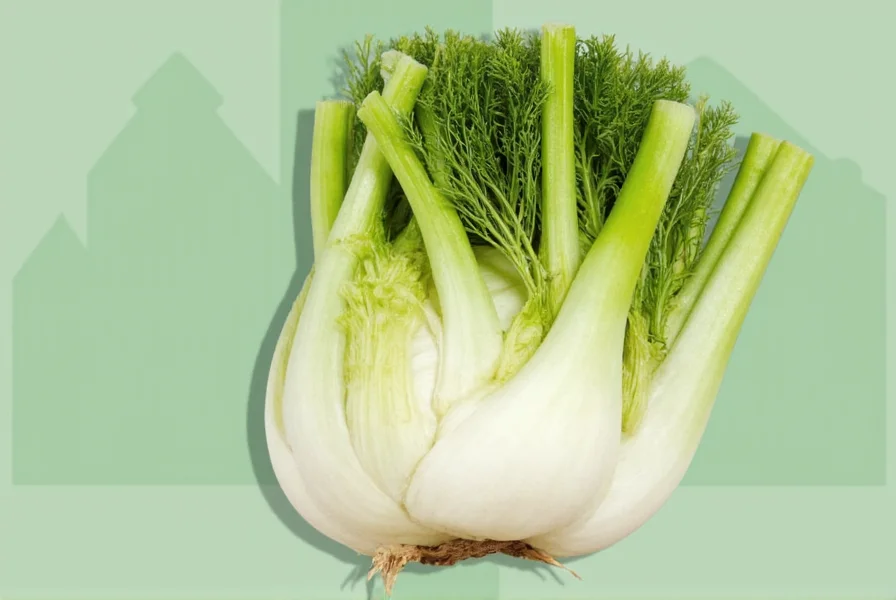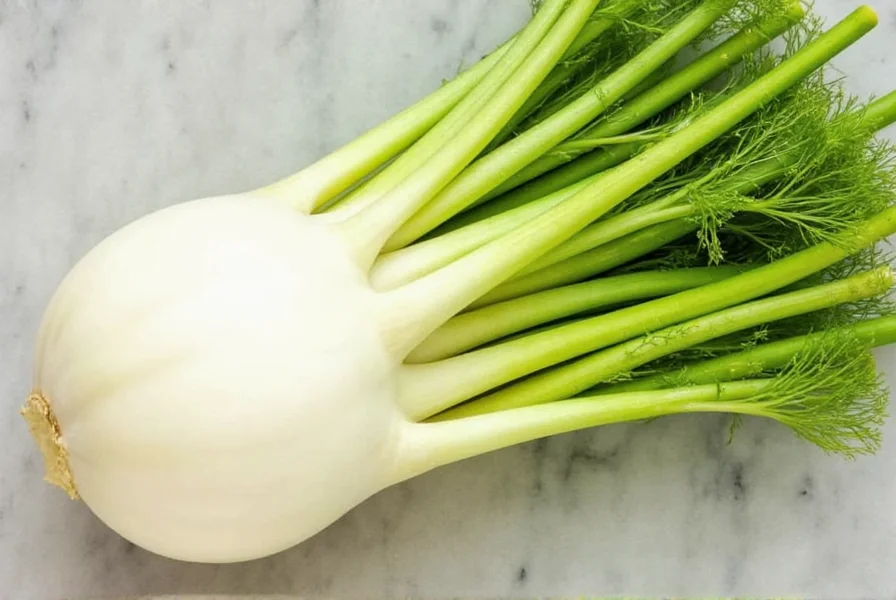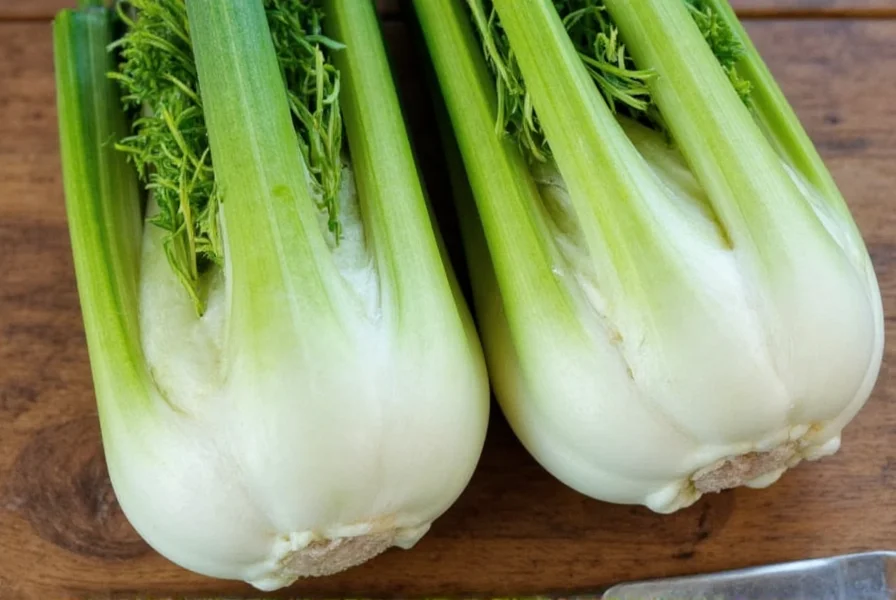Fennel vegetable (Foeniculum vulgare var. azoricum) stands as one of the most versatile yet underutilized vegetables in modern cooking. This cool-season crop features a pale green to white bulbous base, long celery-like stalks, and delicate feathery fronds that resemble dill. What sets fennel apart from other root vegetables is its unique aromatic profile—delivering a subtle licorice or anise flavor that mellows beautifully when cooked.
Understanding Fennel: Bulb, Seeds, and Fronds
Many people confuse fennel vegetable with fennel seeds, but they come from the same plant family with distinct characteristics. The bulb vegetable (Florence fennel) is cultivated for its swollen stem base, while common fennel seeds come from a different variety (Foeniculum vulgare var. vulgare) grown primarily for its seeds and pollen.
| Part of Fennel | Flavor Profile | Common Uses |
|---|---|---|
| Bulb | Crisp, mildly sweet with anise notes | Raw in salads, roasted, grilled, braised |
| Stalks | More pronounced anise flavor | Stocks, soups, stews |
| Fronds | Delicate anise flavor, similar to dill | Garnish, herb blends, compound butter |
Nutritional Benefits of Fennel Vegetable
One cup of raw fennel bulb (about 87g) provides significant nutritional value with minimal calories. This makes fennel vegetable an excellent addition to health-conscious diets. The bulb contains approximately 27 calories, 3g of dietary fiber (11% of daily value), and delivers 10% of your daily vitamin C needs. It's also a good source of potassium, manganese, and folate.
Research indicates that fennel's health benefits extend beyond basic nutrition. The vegetable contains flavonoids and phenolic compounds with antioxidant properties. Anethole, the compound responsible for fennel's distinctive flavor, shows potential anti-inflammatory effects according to studies published in the Journal of Agricultural and Food Chemistry. Traditional medicine has long used fennel for digestive support, and modern research continues to investigate these applications.

Selecting and Storing Fennel Properly
When choosing fennel at the market, look for firm, heavy bulbs with no cracks or browning. The stalks should be crisp and the fronds vibrant green—not wilted or yellowed. Smaller bulbs typically offer more tender texture and milder flavor, while larger bulbs can become slightly woody.
Proper storage extends fennel's shelf life significantly. Store unwashed bulbs in a perforated plastic bag in the refrigerator's crisper drawer. This method keeps fennel fresh for 7-10 days. For longer storage, slice the bulb and freeze it for use in cooked dishes. Never store fennel near ethylene-producing fruits like apples or bananas, as this accelerates spoilage.
Culinary Applications: How to Cook with Fennel
Understanding how to prepare fennel properly unlocks its culinary potential. Start by trimming the root end and slicing off the stalks just above the bulb. Remove any tough outer layers if they appear dry or discolored. The entire bulb is edible—simply cut it lengthwise or crosswise depending on your recipe.
Raw fennel adds wonderful crunch to salads. Try combining thin slices with orange segments, red onion, and a citrus vinaigrette for a refreshing side dish. When cooking fennel, its flavor transforms dramatically. Roasting caramelizes the natural sugars, creating a sweet, mellow flavor that pairs beautifully with chicken, fish, or pork. Braising fennel in broth yields tender results perfect for soups and stews.
Don't discard the fronds! These delicate greens work wonderfully as a fresh herb. Chop them finely to garnish finished dishes, mix into compound butter for grilled fish, or add to salad dressings. The stalks make excellent additions to vegetable stocks or can be used as a bed for roasting meats.
Flavor Pairings and Recipe Inspiration
Fennel's unique flavor profile complements a wide range of ingredients. It pairs exceptionally well with citrus fruits (particularly orange), olives, tomatoes, potatoes, and various seafood. For meat dishes, consider combining fennel with pork, chicken, or duck. The vegetable also works beautifully with other aromatic herbs like thyme, rosemary, and parsley.
One classic preparation involves slicing fennel bulb thinly and serving it raw in a salad with arugula, Parmesan shavings, lemon juice, and olive oil. For a warm preparation, try roasting fennel wedges with olive oil, salt, and pepper at 400°F (200°C) for 25-30 minutes until golden and tender. Another popular technique involves braising fennel in white wine with garlic and herbs until fork-tender.

Growing Fennel in Home Gardens
Gardeners interested in cultivating fennel should know it thrives in cool weather and requires full sun. Plant seeds directly in well-drained soil after the last frost, spacing them 6-8 inches apart. Keep soil consistently moist but not waterlogged. For bulb development, blanch the bases by mounding soil around them as they grow.
Most varieties reach maturity in 80-100 days. Harvest bulbs when they reach the size of a small tennis ball for optimal tenderness. Remember that fennel can cross-pollinate with dill, so keep these plants separated if you're saving seeds.
Common Questions About Fennel Vegetable
Many home cooks wonder about fennel's strong flavor and how to incorporate it into everyday cooking. The key is understanding that raw fennel has a more pronounced anise flavor that mellows considerably when cooked. If you're new to fennel, start with small amounts and gradually increase as your palate adjusts to its distinctive taste.
What does fennel vegetable taste like?
Fennel vegetable has a distinctive mild anise or licorice flavor when raw, which becomes sweeter and more subtle when cooked. The bulb offers a crisp texture similar to celery root, while the fronds provide a more delicate herbal note. Many people find the flavor less intense than expected, especially when incorporated into cooked dishes where it blends well with other ingredients.
Can I eat all parts of the fennel vegetable?
Yes, the entire fennel plant is edible. The bulb serves as the primary vegetable component, perfect for roasting or eating raw. The stalks work well in stocks and soups, while the feathery fronds function as a fresh herb for garnishing or flavoring dishes. Even the seeds, which develop if the plant flowers, are culinary valuable for spice blends and baking.
How do I prepare fennel for cooking?
To prepare fennel, first trim the root end and remove any tough outer layers. Slice off the stalks just above the bulb, reserving them for stock if desired. Cut the bulb in half lengthwise, then remove the tough core with a small knife. From here, you can slice, dice, or quarter the bulb depending on your recipe. For raw applications, thinly slice the bulb and consider soaking in cold water for 10-15 minutes to reduce any sharpness in flavor.
What are good substitutes for fennel vegetable?
Good substitutes for fennel include celery (for texture with less flavor), bok choy (for similar crunch), or茴香 (anise) in small quantities. For the distinctive anise flavor, you can add a pinch of fennel seeds to celery or onion in recipes. For salads where raw fennel is called for, thinly sliced green apple or jicama can provide similar crispness with a different flavor profile.
Does cooking fennel change its flavor significantly?
Yes, cooking dramatically transforms fennel's flavor. Raw fennel has a pronounced anise-like taste that mellows considerably when exposed to heat. Roasting or braising brings out natural sweetness and creates a more complex, earthy flavor profile. The texture also changes from crisp to tender. Many people who dislike the raw flavor find cooked fennel much more approachable and versatile in various dishes.











 浙公网安备
33010002000092号
浙公网安备
33010002000092号 浙B2-20120091-4
浙B2-20120091-4